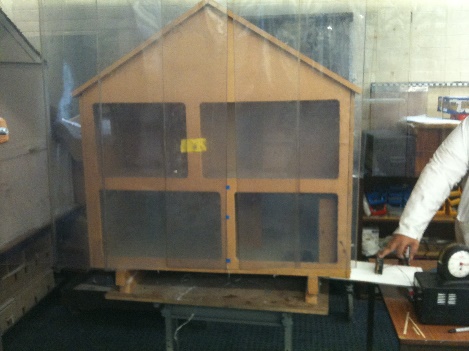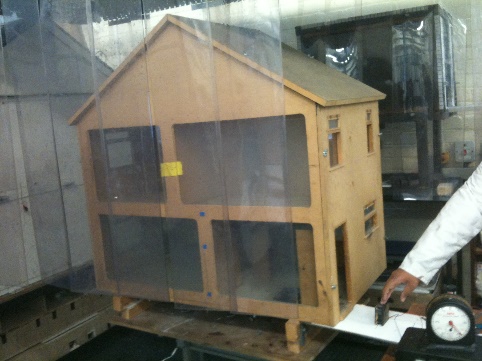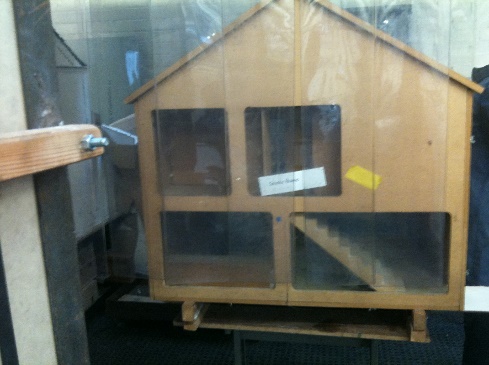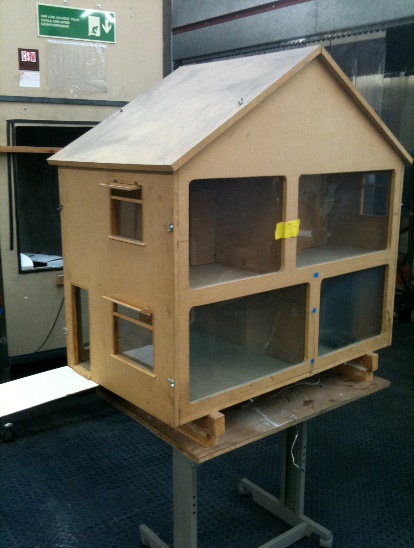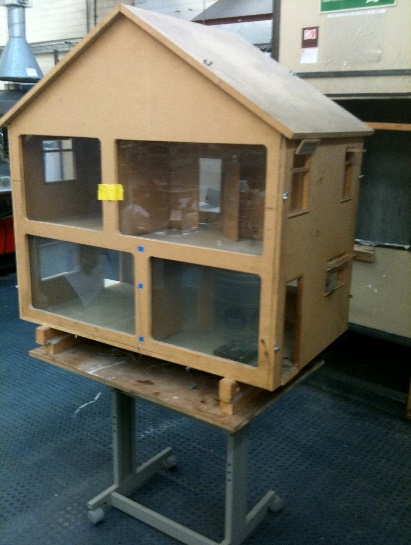Abstract
In many residential houses, natural ventilation has been used as the best way to arrest fire related issues. On the contrary, there are better ways in which ventilation could be achieved in such situations. As a matter of fact, Positive Pressure Ventilation (PPV) may just be a better way to take care of such issues. In this report, the experimental results for natural ventilation and positive pressure ventilation have been discussed and analyzed to come up with final recommendations. Besides natural ventilation, factors that influence PPV have also been discussed with a view of finding the best way to employ the same in residential houses.
Both primary and secondary sources have been utilized for analysis in this report. The laboratory experimental results are the primary sources of information for the report. Secondary sources that have been used include websites and textbooks that are related to the topic of assignment. Therefore, the final conclusions are based on the analysis of the experimental results, and use of related websites and books.
Introduction
In this report, the aims, objectives and background of the topic are given for easier comprehension. Next, the methodologies for conducting the laboratory experiments have been discussed in detail. The analysis and discussion of the experimental results have also been done with a view of meeting the aims and objectives of the research. Finally, the conclusions and recommendations that have been reached are given to conclude the research. The aims and objectives of the research experiment are as described in the paragraphs that follow.
Aims
The aim of the experiment is to measure the time taken for a house unit to clear of smoke in a state of natural ventilation and the time taken when forced ventilation is utilized. By understanding the relationship, it is possible to device the best methods of providing effective ventilation in houses.
Objectives
The key objectives for this experiment are to ensure that the following are achieved:
- The best method of artificial ventilation is identified for applications in buildings.
- To measure the effectiveness of Positive Pressure Ventilation against Natural Ventilation.
Background
Positive Pressure Ventilation (PPV) is a method that involves the use of volumetric flow rate fans to increase the pressure within a compartment, with an aim of forcing the products of combustion to exit the compartment towards a region of lower pressure (Fire. Gov). It is achieved by forcing air into a building compartment so that the pressure is increased relative to the atmospheric pressure. When effectively used, PPV increases the safety of fire-fighters by reducing the amount of heat and smoke present in a compartment.
The flash-point of fuel is defined as the lowest temperature at which the vapor of a combustible liquid can be made to ignite momentarily in the air (Answers.com.) Therefore, the flash-point of a fuel is a measure of how easy it may burn when introduced to a fire source. As such, this holds that fuels with higher flash-points are less flammable than those with lower flash-points (The Engineering Toolbox).
The development of fire growth within a compartment takes place as a result of five main factors. This factors fall into two categories namely; compartmental and fuel related factors. The compartmental factors include ventilation and building material while fuel-related factors include type of fuel, fuel flash-point and air/oxygen presence.
In a compartment, ventilation plays a significant role in the growth and development of a fire. For instance, good ventilation allows heat generation to be effectively reduced in case of a fire (CFBT-US, 2009). This helps in lowering heat within the compartment, and at the same time reduces the risk of ignition of other building materials. The degree of fire resistivity of building materials has a great implication to the development of fire. Fire resistant building materials such as concrete will serve as a barrier to fire development in a compartmental fire. On the other hand, combustible material such as wood and leather will allow for fire development to other regions of a compartment.
The type of fuel influences the growth of fire in a compartment in a number of ways. For instance, liquid fuels tend to flow from one region of a compartment spreading the fire to other points (CFBT-US, 2009). This leads to faster spread of fires as compared to solid fuel sources such as wood which may have a localized fire for sometime. Therefore, it is much easier to control fires from solid fuel sources than liquid fuel sources.
The other influential factor is the flash point of fuel. Fuels with lower flash points are more flammable and will ignite at a lower temperature as compared to those with higher flash points. Therefore, fire spread will take place faster where there happens to be more flammable fuels such as petrol. In order for any fire to progress there should be oxidation taking place. This is determined by the amount of available oxygen at any one time of combustion. When there is an oxygen cut-off, a fire will eventually die due to absence of oxidation.
Methods and Materials (or Equipments)
This laboratory experiment tries to measure the effectiveness of using positive pressure ventilation in eliminating smoke and other heated gaseous products from a burning compartment. This is achieved by measuring the time taken for smoke to completely leave the compartment when using natural ventilation and positive pressure ventilation. In the natural ventilation experiment, all doors and windows are opened and the time taken for all the smoke to leave the compartment is recorded. On the other hand, fans are used to facilitate the removal of smoke from the compartment, and the time used for complete smoke elimination is recorded.
Therefore, there are three tests that were conducted and include: Test 1 for natural ventilation; test 2 for PPV from front and rear end; and test 3 for PPV with fan located 20cm from entry. Below are the descriptions for the experimental methodologies for the three tests.
In the test for natural ventilation, the first step is to close all the external doors and windows while leaving all internal doors open. A smoke pellet is then placed in the metal tray in the front room and ignited using a lighter. The external door is closed and generated smoke is allowed to fill the house for three minutes. After three minutes, all doors and windows are opened and the time taken for the smoke to naturally clear from the house is recorded.
For test 2, the procedure is the same except that a fan is introduced 10cm from the front door to aid in smoke elimination. After three minutes of smoke filling, only the front and rear doors are opened while all the windows remain closed. The fan is then positioned 10cm from the front door and time taken for the smoke to clear from the house is recorded. The test is repeated using different fan sizes and positioning to measure the variation in effectiveness. For test 3, the procedure is the same except that a fan is introduced 20cm from the front door to aid in smoke elimination. The results obtained from the experiments are discussed in the following analysis section.
Results and discussion / Analysis
Test 1: Natural Ventilation
This experiment was dependent on natural ventilation with no fan being used to aid in ventilating the smoke-logged compartment. The smoke pellet was placed in the front room then all the doors and windows were opened to allow for ventilation to take place. It took up to three minutes for the whole house to fill with smoke from the smoke pellet. On opening of all the doors and windows, the smoke cleared from the house in about six minutes but with minimal smoke remaining in the first floor rooms.
Test 2a: PPV with small Fan size 10cm
In this experiment, the small-sized fan was placed 10cm from the front door of the house. The house was filled with smoke in approximately the same time of three minutes as in the case for natural ventilation experiment. On opening of the rear door and switching on the fan, it was noted that the ground floor was clear of smoke within 2 minutes. At the same time, the 1st floor smoke was clearing slowly. The small-sized fan was placed 10cm from the rear door of the house. The house was filled with smoke for three minutes, then the rear and front doors were opened. On switching on the fan, it was noted that it took a maximum of 3 minutes for the ground floor to clear of smoke, while 10% of smoke was still remaining in first floor after 3.30 minutes.
Test 2b: PPV with Large Fan (No frame) 10cm
When the larger fan with no frame was placed 10cm from the front door, it was noted that the ground floor rooms took 1 minute to clear. On the other hand, the 1st floor rooms took slightly longer to clear as 15% of smoke was still remaining after 3 minutes. Shifting of the fan to the rear door area improved the scenario as the ground floor rooms now took 1 minute to clear of smoke, while the whole house was clear of smoke after approximately 1.15 minutes.
Test 2c: PPV with Large Fan (With frame) 10cm
When the larger fan with frame was used, it was noted that the ground floor rooms took slightly lesser time of 45 seconds to clear of smoke. An improvement was also noted in the 1st floor rooms which took slightly lesser time to clear as only 15% of smoke was still remaining after 2 minutes. Shifting of the fan to the rear door area resulted in the ground floor rooms taking much longer time (1 minute) to clear of smoke, while the whole house was clear of smoke after approximately 1.15 minutes. Comparing with the test results for large fan with no frame, there was no noticeable change in the clearance time.
Test 3: PPV with Large Fan (With frame) 20cm
When the fan was placed 20cm from the front door, the clearance time for the rooms was noted to worsen. As a matter of fact, the ground floor rooms cleared in 1 minute while after 4 minutes, the 1st floor rear room still contained 20% of smoke. Shifting of the fan to the rear door area resulted in significant improvement in smoke clearance time. For instance, it was noted that the ground floor was clear in 45 seconds while the whole house was clear in only 1 minute of exposure.
Conclusion and Recommendations
As noted in the above experimental results, the natural ventilation and positive pressure ventilation tactics have significant variations. PPV is very important because it greatly improves ventilation in houses. The application of fans to force ventilation has resulted in a faster elimination of the smoke from the experimental compartment as compared to natural ventilation. However, there are other factors that influence the effectiveness of PPV which include the size and positioning of the fan. Comparing the results from experiment 2, 3 and 4, it is clear that a larger fan with higher velocity increases the rate of smoke elimination from a compartment.
On the contrary, increasing the distance of the fan in relation to the source of smoke resulted into a worse scenario. This reduced the general effectiveness of the fan as shown in experiment 5 where longer time of smoke clearance was observed. From these results, it is conclusive to note that PPV is effective in ventilation and should be practiced in real life situation.
List of References
Answers.com. Flash point. American Heritage Dictionary. Web.
CFBT-US (2009). Visualizing Fuel Packages. CFBT-US. Web.
Fire. Gov. Positive Pressure Ventilation. Fire. Gov. Web.
The Engineering Toolbox. Flash point – Fuels. The Engineering Toolbox. Web.
Appendices
